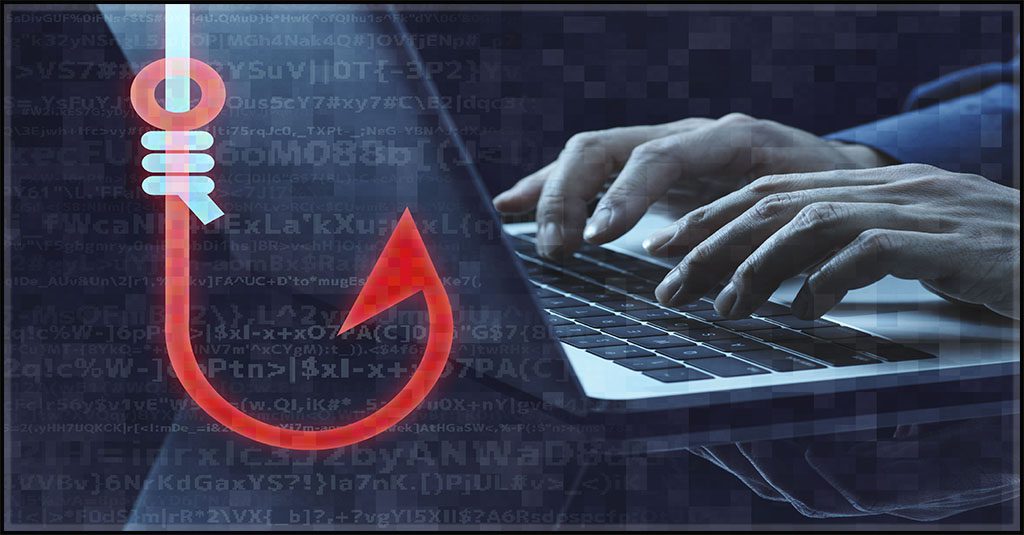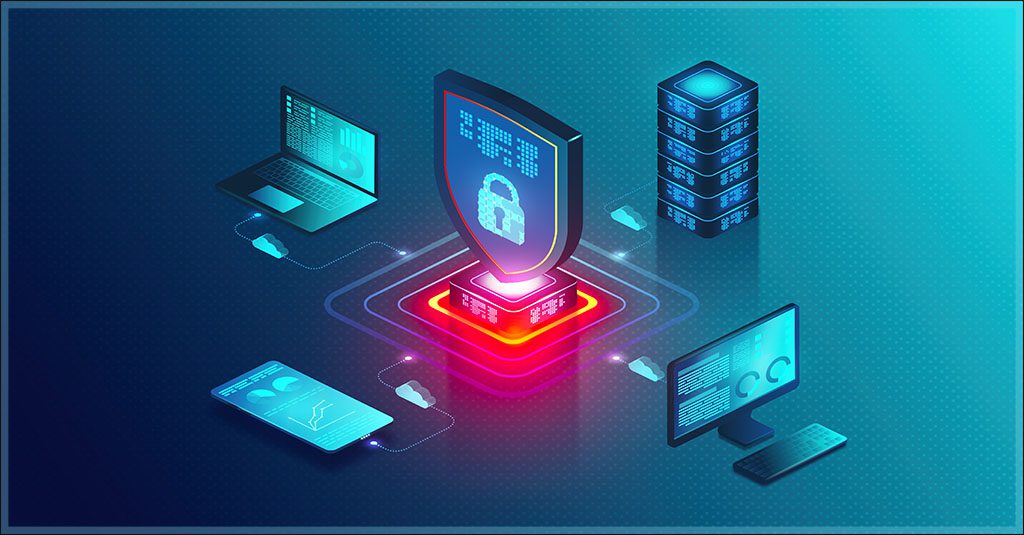What Is a Zero-Day Attack?

In today’s rapidly evolving cybersecurity landscape, one term strikes fear into the hearts of security professionals: zero-days. These elusive vulnerabilities represent the Achilles’ heel of digital systems, offering hackers unprecedented access and control. Understanding zero-days is vital when it comes to fortifying your digital defenses against the relentless onslaught of cyberthreats.
In this blog, we’ll take a deep dive into zero-days, unraveling their intricacies, exploring their origins and dissecting their impact on our digital ecosystem. We’ll demystify the enigma surrounding zero-days and empower you with the knowledge needed to navigate the complex terrain of modern cybersecurity.
To learn more about the challenges that businesses face these days, including zero-day attacks, download the Kaseya Security Survey Report.
What is zero-day?
A zero-day vulnerability refers to a flaw or weakness in a software application or system that is unknown to the vendor or developer.
Zero-day vulnerability
The term “zero-day” originates from the idea that developers have zero days to fix an issue because it is exploited immediately upon discovery. These vulnerabilities can exist in operating systems, web browsers, applications or any software that interacts with data.
For instance, a zero-day vulnerability could be a bug in a web browser’s code that allows malicious actors to remotely execute arbitrary commands on a victim’s system. Since the vendor is unaware of this flaw, there are no patches or updates available to mitigate the risk, making it highly attractive to attackers.
Zero-day exploit
A zero-day exploit is the method or code used by attackers to take advantage of a zero-day vulnerability. It is essentially the weaponization of the vulnerability, allowing attackers to breach systems, steal data or cause disruption. Zero-day exploits are often crafted with precision to target specific vulnerabilities in software or hardware.
If a zero-day vulnerability exists in a web browser, attackers may create a zero-day exploit in the form of a malicious script or payload that exploits the vulnerability when a user visits a compromised website. This exploit could then enable the attacker to gain unauthorized access to the user’s device, compromise sensitive information or install malware.
Zero-day attack
A zero-day attack occurs when threat actors actively exploit a zero-day vulnerability using a zero-day exploit before a patch or fix is available from the software vendor. These attacks are highly dangerous because they bypass traditional security measures, such as antivirus software or intrusion detection systems, since they target previously unknown vulnerabilities.
In a zero-day attack scenario, cybercriminals may launch widespread campaigns or targeted attacks to exploit the vulnerability across multiple systems or organizations. The goal could vary from stealing confidential data for financial gain to disrupting critical infrastructure for political motives.
In summary, a zero-day attack exploits a zero-day vulnerability using a zero-day exploit, allowing attackers to infiltrate systems undetected and carry out malicious activities. These components are interconnected, forming a triad of risk in the realm of cybersecurity, where timely detection and mitigation are paramount to defending against such threats.

Learn how to spot today’s most dangerous cyberattack & get defensive tips in Phishing 101 GET EBOOK>>
Why are zero-day attacks so dangerous?
IT professionals should be concerned about zero-day attacks because of the number of ways they can harm businesses.
Operational disruption and financial loss: Zero-day attacks can lead to severe disruptions in business operations, resulting in downtime, loss of productivity and potential financial losses. For example, if a zero-day attack compromises critical systems or data, it can halt essential business processes, leading to revenue loss and impacting profitability.
Remediation efforts following a zero-day attack can incur substantial costs, including forensic investigations, system repairs or upgrades, legal fees and potential regulatory fines. These financial burdens can strain an organization’s budget and hinder future growth initiatives.
Erosion of reputation and customer trust: Zero-day attacks can tarnish an organization’s reputation and erode customer trust. If customer data is compromised or services are disrupted due to a zero-day attack, it can lead to negative publicity and a loss of customer confidence.
Customers expect their data to be safeguarded against cyberthreats, and any breach resulting from a zero-day attack can undermine their trust in the organization’s ability to protect their information. This loss of trust can lead to customer churn and impact long-term customer satisfaction and loyalty.
Reduction in operational efficiency and profitability: Zero-day attacks can impede operational efficiency by causing system downtime, resource allocation to incident response and the deployment of emergency security measures. This disruption can hamper day-to-day business activities and hinder overall efficiency.
Inefficient response to zero-day attacks can prolong the duration of the incident, exacerbating its impact on profitability. Quick identification and mitigation of zero-day vulnerabilities is crucial to minimizing the operational and financial repercussions of such attacks.
Personal stress and job insecurity: IT professionals bear the responsibility of safeguarding their organization’s digital assets and protecting against cyberthreats like zero-day attacks. Failure to effectively mitigate these threats can lead to personal stress, job dissatisfaction and even job insecurity.
IT professionals invest significant time and effort in staying abreast of emerging threats and implementing robust security measures. Successfully defending against zero-day attacks not only enhances job satisfaction but also contributes to personal happiness by mitigating the stress associated with potential security breaches.

See the keys to selecting a Managed SOC to find the perfect one for your clients & your MSP. GET CHECKLIST>>
Recent zero-day attack examples
Zero-day attacks and exploits have been appearing more regularly as cybercriminals search for new ways to penetrate business security. These examples of recent zero-day attacks show just how much trouble a zero-day can be. Here’s a brief overview of what happened in each of these attacks:
Adobe Acrobat & Reader
In this zero-day attack, malicious actors exploited vulnerabilities in popular PDF viewing and editing software Adobe Acrobat and Reader,. These vulnerabilities allowed attackers to execute arbitrary code remotely, potentially compromising the security of affected systems. The attack vector typically involved tricking users into opening malicious PDF files or visiting compromised websites containing exploit code targeting the vulnerabilities. Adobe released emergency patches to address these zero-day vulnerabilities and urged users to update their software to mitigate the risk.
Google Chrome
Google Chrome, one of the most widely used web browsers, fell victim to a zero-day attack when attackers exploited vulnerabilities in its codebase. These vulnerabilities enabled attackers to execute arbitrary code within the browser’s sandboxed environment, potentially leading to system compromise or data theft. Attackers exploited these vulnerabilities by enticing users to visit malicious websites or click on malicious links. Google responded promptly by releasing security updates to patch the vulnerabilities and protect users against further exploitation.
Cisco IOS XE
Cisco IOS XE, the operating system used in Cisco networking devices, experienced a zero-day attack targeting vulnerabilities in its codebase. These vulnerabilities allowed attackers to gain unauthorized access to affected devices, execute arbitrary commands and potentially disrupt network operations. Attackers exploited these vulnerabilities by targeting specific network devices with vulnerable configurations. Cisco responded by releasing security advisories and patches to address the vulnerabilities and mitigate the risk of further exploitation.
Skype for Business
Skype for Business, a widely used communication platform for businesses, encountered a zero-day attack when attackers exploited vulnerabilities in its software. These vulnerabilities enabled attackers to execute arbitrary code remotely, potentially compromising the confidentiality and integrity of communications conducted through the platform. Attackers leveraged various attack vectors, including phishing emails containing malicious links or attachments, to exploit these vulnerabilities. Microsoft, the parent company of Skype for Business, released security updates to patch the vulnerabilities and safeguard users against further exploitation.

Learn how Datto EDR satisfies cyber insurance requirements for endpoint protection & EDR. DOWNLOAD REPORT>>
How does a zero-day attack work?
Here’s a typical sequence of events that occur in a zero-day cyberattack:
- Software vulnerability introduced: A software vulnerability is inadvertently introduced during the development phase or through updates, creating a weakness in the software’s code or configuration.
This vulnerability may remain undetected by developers, leaving the software susceptible to exploitation by malicious actors. - Vulnerability discovered and exploited: A skilled hacker or cybercriminal discovers the vulnerability through various means, such as reverse engineering, code analysis or targeted scanning.
Once the vulnerability is identified, the attacker crafts an exploit to take advantage of it. This exploit could be in the form of malicious code, scripts or techniques designed to trigger the vulnerability and achieve the attacker’s objectives. - Cyberattack launched and executed: The attacker launches the cyberattack by deploying the exploit against vulnerable systems or software instances.
The exploit successfully triggers the vulnerability, allowing the attacker to gain unauthorized access, execute arbitrary code or perform other malicious actions.
Depending on the attacker’s goals, the cyberattack could result in a data breach, system compromise, disruption of services or other detrimental effects on targeted systems or networks. - Zero-day attack detected: Security researchers, cybersecurity professionals or affected organizations detect the zero-day attack through various means, such as anomaly detection, network monitoring or incident response activities.
Upon detection, immediate action is taken to investigate the attack, analyze the exploit and its impact and develop mitigation strategies to contain the attack and prevent further exploitation.
This detection marks the beginning of the response and recovery phase, where efforts are focused on patching the vulnerability, securing affected systems and restoring normal operations while minimizing the damage caused by the zero-day attack.

Explore how AI technology helps businesses mount a strong defense against phishing GET INFOGRAPHIC>>
Best practices for zero-day attack prevention
While it is not possible for an organization to prevent zero-day attacks altogether due to their very nature, these best practices can help mitigate zero-day attack risk.
Security awareness training
Security awareness training educates employees about cybersecurity threats, including zero-day attacks, and teaches them how to recognize and respond to suspicious activities. By fostering a culture of security awareness, organizations empower employees to be vigilant against phishing attempts, suspicious links and other tactics used by attackers to exploit zero-day vulnerabilities.
Patch management
Patch management involves regularly updating software and systems with the latest security patches released by vendors. This helps mitigate the risk of zero-day attacks by addressing known vulnerabilities before they can be exploited. Organizations should establish robust patch management processes to ensure timely deployment of patches across all devices and applications, reducing the window of opportunity for attackers to exploit zero-day vulnerabilities.
Vulnerability scanning and management
Vulnerability scanning involves identifying weaknesses and vulnerabilities in systems, networks and applications through automated scans. Vulnerability management encompasses the process of prioritizing, mitigating and remediating these vulnerabilities to reduce the organization’s attack surface. By conducting regular vulnerability scans and implementing a comprehensive vulnerability management program, organizations can proactively identify and address potential zero-day vulnerabilities before they are exploited by attackers.
Utilize a firewall
Firewalls serve as a barrier between internal networks and external threats, including zero-day attacks. By filtering incoming and outgoing network traffic based on predetermined security rules, firewalls help prevent unauthorized access and protect against known and unknown threats. Organizations should deploy firewalls at network perimeters, implement advanced firewall configurations and regularly update firewall rulesets to strengthen defenses against zero-day attacks.
Update software and systems
Regularly updating software and systems with the latest security patches, bug fixes and feature enhancements is crucial for mitigating the risk of zero-day attacks. Vendors release updates to address known vulnerabilities and improve software security, making it essential for organizations to prioritize and schedule regular updates. By keeping software and systems up to date, organizations can close known security gaps and reduce the likelihood of exploitation by zero-day exploits.
Use antivirus software
Antivirus software plays a vital role in defending against zero-day attacks by detecting and blocking known malware and suspicious activities. While antivirus software may not prevent all zero-day attacks, it can provide an additional layer of defense against common attack vectors and malware strains. Organizations should deploy reputable antivirus solutions, regularly update antivirus definitions and conduct regular scans to detect and remove malicious threats, including zero-day exploits.
Implement zero trust security
Zero trust Security is a cybersecurity framework based on the principle of “never trust, always verify,” which assumes that threats exist both outside and inside the network. By implementing zero trust security principles, organizations adopt a holistic approach to security, requiring continuous authentication, strict access controls and least privilege access policies. This approach minimizes the attack surface and reduces the risk of zero-day attacks by limiting unauthorized access to critical assets and sensitive data.
Download this infographic to learn more about implementing zero-trust security.

Every business faces insider risk, from employee mistakes to malicious acts. Learn how to mitigate it. DOWNLOAD EBOOK>>
How can ID Agent help stop zero-day attacks?
BullPhish ID and Graphus are a power pair that can help businesses and MSPs avoid zero-day attacks. BullPhish ID offers easy-to-manage security awareness training with customizable phishing simulations. Graphus is an advanced anti-phishing solution that helps you protect your Microsoft 365 and Google Workspace email by using AI to stop both known and zero-day threats.
Here are some benefits that these solutions bring:
- Smart email security: AI-enabled email security with Graphus is an ideal defense against zero-day attacks. Why? Nine in 10 cyberattacks start with a malicious email message. Only smart email security, like Graphus, can detect and quarantine suspicious messages automatically while continuously learning about a company’s communication patterns, rather than relying on threat reports, enabling it to spot and stop zero-day threats.
- Promotes security culture: Security awareness training helps foster a culture of security within organizations. By educating employees about cybersecurity best practices, including how to recognize phishing emails or suspicious links, organizations create a workforce that’s more vigilant and proactive in identifying potential threats. With BullPhish ID, employees can undergo simulated phishing attacks, receiving instant feedback and learning opportunities to reinforce their understanding of security protocols.
- Cybercrime and email fraud awareness: Security awareness training goes beyond just teaching employees about basic cybersecurity concepts. It delves into understanding the motives and craft behind cyberattacks, including zero-day attacks. By learning about common tactics, techniques and vehicles used by cybercriminals, employees gain valuable insights into how attackers exploit vulnerabilities and manipulate human behavior. BullPhish ID provides real-world examples of phishing attempts, helping employees recognize red flags and develop a deeper understanding of the tactics employed by malicious actors.
- Helps stay up to date on current trends: Cyberthreats are constantly evolving, with new attack methods and vulnerabilities emerging regularly, including zero-day attacks. Security awareness training keeps employees informed about current and emerging threats in the cybersecurity landscape. With BullPhish ID, organizations can access up-to-date information on the latest phishing trends and tactics, ensuring that employees are equipped with the knowledge they need to stay ahead of evolving threats.
Request a demo to let us show you the benefits you’ll receive from BullPhish ID and Graphus.

Our Partners typically realize ROI in 30 days or less. Contact us today to learn why 3,850 MSPs in 30+ countries choose to Partner with ID Agent!
Check out an on-demand video demo of BullPhish ID or Dark Web ID WATCH NOW>>
See Graphus in action in an on-demand video demo WATCH NOW>>
Book your demo of Dark Web ID, BullPhish ID, RocketCyber or Graphus now!